The Article
Yamaha’s MCRN870D mini system: HIDDEN DEPTHS
21st July 2016
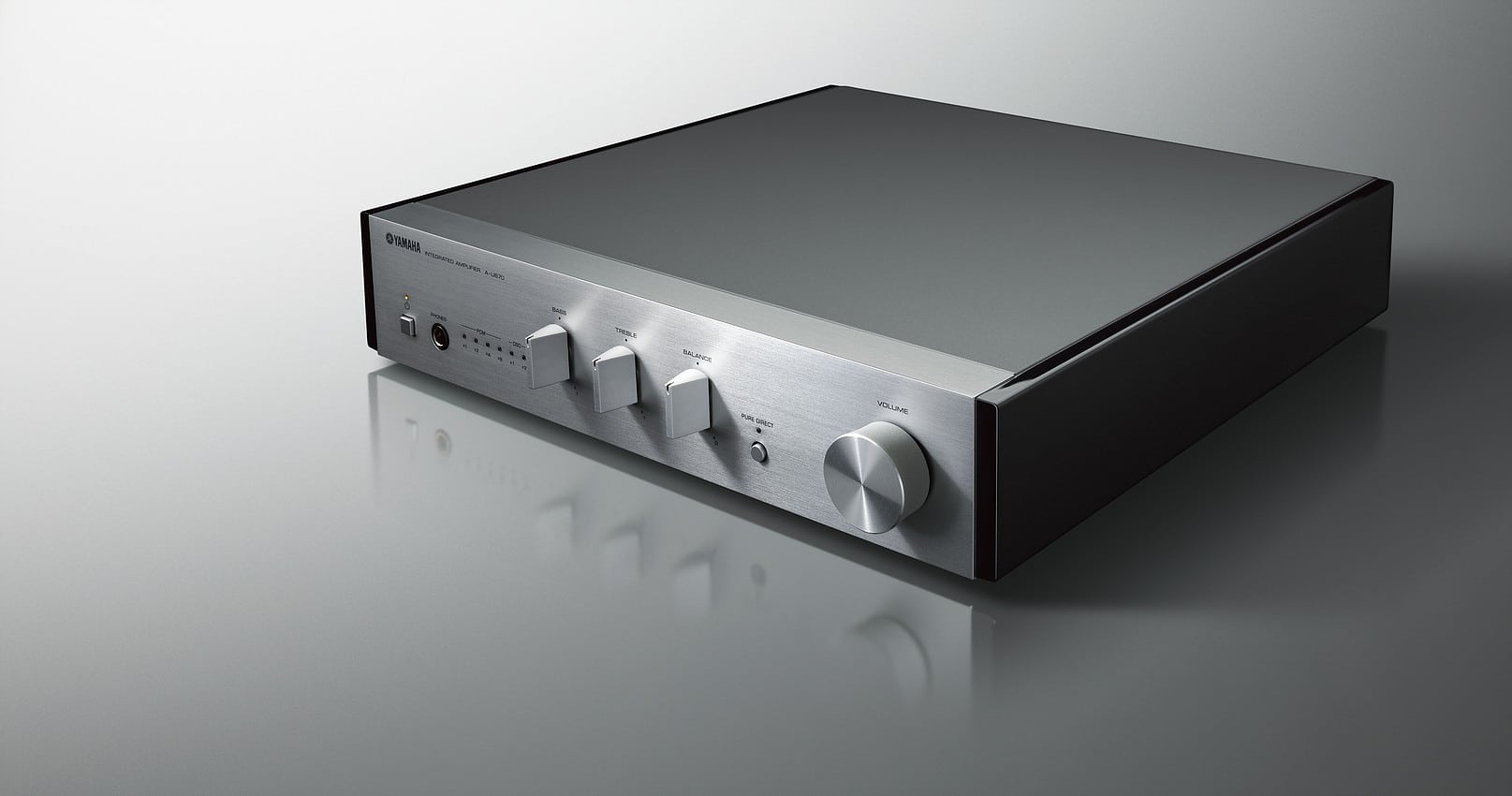
Part of the larger Yamaha MCRN870D mini system, Paul Rigby unplugs the AU670 amplifier and CDN670D Network CD Player and reviews them as separate items
What is the point of a mini system? After all, I’m here to talk about an amp with another box of digital sources that costs around £750 in total. You could buy yourself a perfectly respectable Cambridge Topaz amp and CD player for under £400, after all. Well, the reason has got a lot to do with convenience, a larger feature count and integration. As you will see, the Yamaha system is packed with facilities, is designed to work together as a single unit, has a nicely finished and matched look that is slightly nostalgic in its fascia design and is sized to fit into most small spaces.
The 70W amp, on its own, has enough facilities to be usable as a single entity. Apart from the power button and tone controls (very 70s), it also offers a Pure Direct button to bypass these tone controls in sonic terms, a volume knob, a headphone port for the built in headphone amp plus PCM and DSD lights for digital play (although, they come with a twist, which I’ll address in a second). The rear offers a single set of analogue inputs, a USB port (Type B), a port for a possible subwoofer, ‘proper’ speaker terminals plus the built in power cable. There is also a System port in which you plug in an umbilical cable that also connects to the Network CD Player: the other main bit of this mini system. This allows the remote control, that arrives with the Network CD Player (NCP), to control both boxes. It also allows certain controls present on the NCP to change features on the amp.
For example, although the amp has those digital playback alert lights that I mentioned above, the input selector for them is present on the NCP, not on the amp as you might expect. An odd choice but, on reflection, one that may just benefit sound quality. This does mean, though, that your listening options are restricted if you wanted to use the amp on its own. That is, on the amp alone, you can hear music from an external CD player or a third-party turntable but not via that built-in USB port, you need the input selector for that and, as we now know, that sits on the NCP.
The NCP, meanwhile, bristles with features. Yamaha might call it a Network CD Player but this box is more of an ‘Entertainment System’ or ‘Hub’. It includes Sabre 32 DAC support of DSD files to 5.6MHz (DSD128) format or 32bit/384kHz PCM playback, DAB radio, Internet radio, USB port for portable USB drive sticks, Bluetooth/AirPlay/MusicCast (Yamaha’s own Bluetooth system) support, NAS external storage and an Ethernet port.
The front of the NCP includes that external USB drive slot, power button, disc tray for CDs, indicators for Bluetooth/Wi-Fi, the usual CD transport buttons and that essential input knob.
The rear sees a radio antenna port, Aux In, Analogue Out, a System jack umbilical cord socket to connect to the amp, Ethernet, Wireless antenna and Digital In. Like the amp, the power cable is fixed to the chassis.
To dwell on the Yamaha design decision here, you would think that an integrated amp on a mini system would be the unit that would hold all of the facilities and the NCP would, well, play CDs only. That’s not so and, if you wonder about that design quirk, there’s a good reason for it. The less amplified electrical imposition on delicate features such as radio, digital sources and the like, then the lower the overall noise interferance. Stripping away most of the features from the integrated amp and placing them elsewhere can only be a ‘good thing’ for the mini system as a whole in terms of final sound quality. That is, Yamaha has performed a measure of isolation here, distancing most of the audio features from the power supply.
Hence, the amplifier can be utilised as an integrated amp but it’s more of a basic pre-amp with an added power amp combo. Most of the interesting stuff is resident on the NCP.
That’s the essence of mini system then but I couldn’t help but be awkward.
Yes, it’s a mini system and mini systems are traditionally seen as single entities and I will review it as such, never fear. Some mini systems, of course, will only work at all if you have all of the components fitted together and plugged in. This one gives you a bit of leeway because you can, if you want, buy the amp and then upgrade it later by adding the Network CD player. You’re not really supposed to but I’m telling you that you can. Ideal if you are short of cash.
What I’d like to do, then, is to look at the amplifier first during the sound tests then add the NCP later. You can already find another review HERE where I address the matching speakers that also fit into this mini system but they also can be bought seperately. The NSBP401 speakers cost an extra £350. If you buy these speakers plus these two boxes (the NCP and the amp) at the same time, then you get a discount and can buy the lot for just under £1,000.
So, the amplifier was first up for a sound test. Showing proper respect, I decided to compare the amp section to another seriously budget audiophile amp, blowing the dust off my trusty, veteran Cambridge Azur 651A integrated. A quite superb budget design that initially hit the shelves for around £350-£400. So, a realistic comparison with this dinky Yamaha.
SOUND QUALITY
I started the sound tests with the amp as a stand-alone unit and, with the Pure Direct button ‘on’ (very important that) plugged my turntable into it while linking up a pair of Acoustic Research speakers. Playing a slice of Depeche Mode and the track, Enjoy The Silence from the album, Violator, I was struck, not by any stark differences between the Cambridge but the similarities. One of the big giveaway issues with amplifiers at this low price point is a temptation to push a hard, harsh bass into your face to [cough] ‘impress you’. This effect tends to up the stridency of the midrange to give you overly clinical detail. The problem with this is that, after 20 minutes listening, you can’t take any more as listening fatigue sets in. You suddenly realise that the garden needs attention or you really must go and buy that bottle of milk.
The Yamaha, like the Cambridge, doesn’t suffer from this classic budget mini-system issue. Instead, you are provided with a broad soundstage and a slightly increased midrange precision. There’s no brightness here but there is an extra element of focus. This is not a bad thing because the Azur offers quite a soft focus presentation that is sweet and pleasant and cuddly. The Azur has a big, cloudy, floating soundstage whereas the Yamaha’s is more well-defined and crisp. The Yamaha gets down to business with its forceful and powerful lower frequency response that offers enough beneficial low noise response to extract quite subtle details, sitting at the back of the master. On this track, the subtle percussive details, as the track rolls along, are impressive and easily targeted by the ear. The latter results in quite a rich and involved presentation that has the ear bouncing from one instrument to the next.
Playing Bing Crosby’s Swanee on CD, via my Leema CD player, complete with a jazz quartet fronted by the piano of Buddy Cole, I was impressed by the intimate nature of the Crosby vocal which, because of the precise nature of the Yamaha’s presentation, focused on the close mic approach to the Crosby delivery. Such, indeed, was the attention to detail that you could easily discern Crosby’s intake of breath before he delivered each line which enhanced the intimate nature of the song. The percussion, via Nick Fatool, was clear, detailed and surprisingly characterful while Cole’s own keys never infused the rest of the soundstage with the sort of bloom that you often hear via lesser amplifiers, such is the often chaotic nature of the dynamics from the piano.
I then plugged in the Network CD Player and continued with the Crosby tracks. As you might expect, the Yamaha CD player didn’t have the same sonic qualities as the Leema. No surprise, the Leema is twice the price of the entire Yamaha two-box product and the Network CD Player is only partly a CD source, don’t forget. Hence, the actual budget assigned to the Yamaha CD player section alone will only be a fraction of the overall £350 price, if you think about it.
Hence, the CD output didn’t quite have the dynamic reach or the expansive soundstage or even the detailed insight that the Leema could offer but, that said, the Yamaha CD player offered a good solid playback for the price. Vocals were relatively emotive, bass was strong and punchy while the midrange, enhanced and accentuated the precision of the presentation.
Plugging in my SSD-powered MacBook via the NCP’s USB port and playing Harry “Big Daddy’ Hypolite’s Big Bad Girl at 24bit/96kHz I was happy to hear how the focus and precision of the Yamaha took control of this big, bold, guitar playing blues shouter. There was a slight hardening of the vocals at a higher pitch but, in the main, the focused detail was a joy to experience. Actually, I don’t really blame the Yamaha for this hardening because my MacBook was busy ‘being a computer’ which adds unwanted noise to the source. The guitar was satisfyingly metallic and cut through the vocals like a grammatical knife while the Hypolite performance provided plenty of space and air for expression and emotion.
To introduce a purer, higher quality source, I plugged in my Astell & Kern AK120 into the Yamaha via the optical port but still challenged it by playing a relatively bright master of Money For Nothing from Dire Straits at 88.2kHz. The AK120 itself naturally curbs this track’s brightness because the high quality guts of the player can handle the cutting dynamics. You still hear the essence of the strident master but it no longer bothers you as much. The Yamaha proved, on this track, just how transparent it is to sources because it sounded wonderful. Full, rich, detailed and powerful in the lower frequencies. Via the Yamaha, the bright master is still there, you can hear it during Mark Knopfler’s vocal and guitar crescendos but the high resolution source is handled superbly for a system of this price point.
Proof of the pudding was playing Bob Marley’s I Shot The Sheriff at 24bit/96kHz. A beautiful render of a great song featuring a wide soundstage, with all instruments clearly visible to the ear, tight and characterful bass with even subtle textures from the Hammond organ a particular highlight.
CONCLUSION
This pair of boxes should really be seen as a mini system only (that’s how Yamaha would prefer you look at the twin boxes) but I have had many queries from users who are either just getting back into vinyl or are new on the scene. The question I often hear is, “If I get Turntable X and Speakers Y can you recommend Amplifier Z?”
Well, this Yamaha mini system now extends the choice. It’s a choice that is not for everyone out there, I’m fully aware of that. That said, if you wanted to, you could do this. Buy yourself your new turntable and speakers (maybe the Yamaha speakers mentioned elsewhere) then buy the amp portion of this mini system. Use it as a very basic amp first and then later, when you have the cash, add the Network CD Player box. The CD player will use the amp’s only set of RCA inputs but the Network Player chassis also arrives with a spare set of RCA ports. So you can plug your phono amp into the Network Player instead and run your deck from there. At that point, you will then be able to retain your turntable set up but also extend your facilities to include CD, radio, external storage and more in one fell swoop and using one single and quite elegant looking box.
What happens, though, if you’re not interested in vinyl? For CD-based users who might use the amp as a part of an external CD-based hi-fi chain, the additional Network CD Player box is bristling with so many extra digital facilities that you could easily ignore Yamaha’s CD section, use your own superior CD player and just utilise the gamut of additional Yamaha digital facilities on offer.
That’s the feature bit. In terms of sound quality? I can’t fault it, for the price: with Pure Direct engaged, that is. With Pure Direct set to ‘off’, the system sounds veiled and harsh. With Pure Direct ‘on’, the amplifier as a single entity still sounds solid state in its musical presentation but is never hard or nasty. Instead, it utilises solid state’s best aspects by giving you precision and focus. The low noise aspect of its design prevents even a hint of stridency or brightness.
Joined by the Network CD Player, this Yamaha mini-system shows just how transparent and honest it can be. That is, give it a poor quality source and second rate hardware and it’ll give that quality back to you in spades. Feed it with a top quality source and you have to work out how to smile wide enough.
Bottom line? I hate mini-systems. I love the Yamaha mini system.
YAMAHA AU670 AMPLIFIER/CDN670D NETWORK CD PLAYER
Price: (AU670 amp) £359.95 ; (CDN670D CD player) £399.95
Web: uk.yamaha.com/en
Tel: 01908 366700
GOOD: pure direct feature, innovative design, feature count, focused midrange, transparency
BAD: nothing at the price
RATING: 8
REFERENCE SYSTEM
Rega RP3 turntable
Cambridge Azur 651A integrated amplifier
Apple MacBook
Astell & Kern AK120 digital player
Acoustic Research Radiance One Speakers
Black Rhodium cables

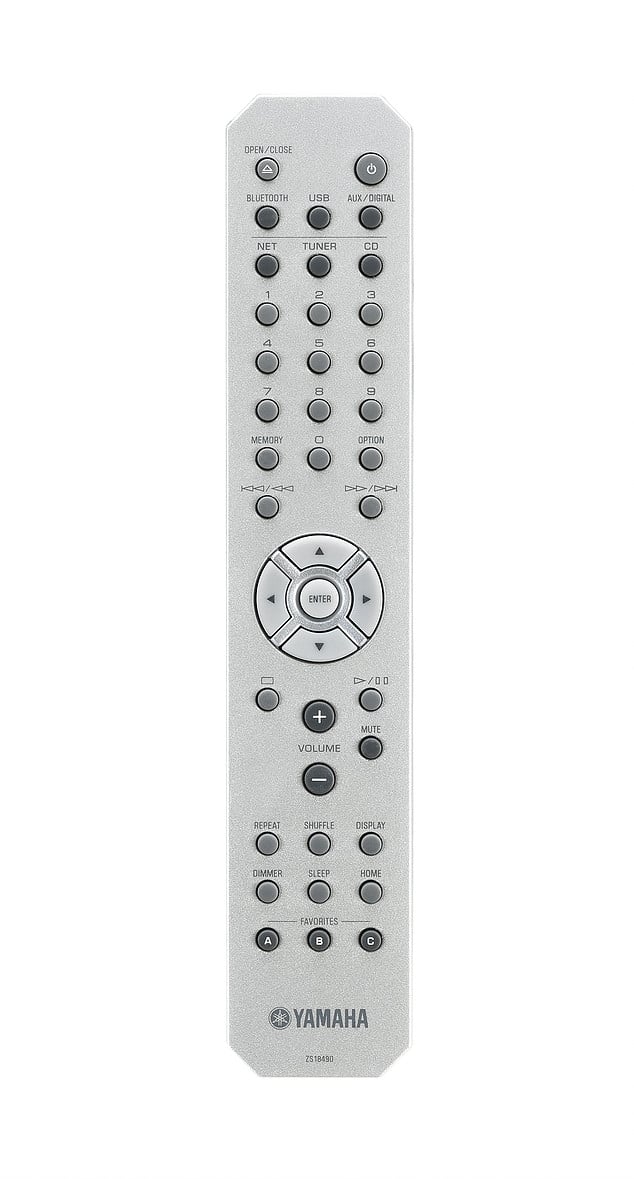
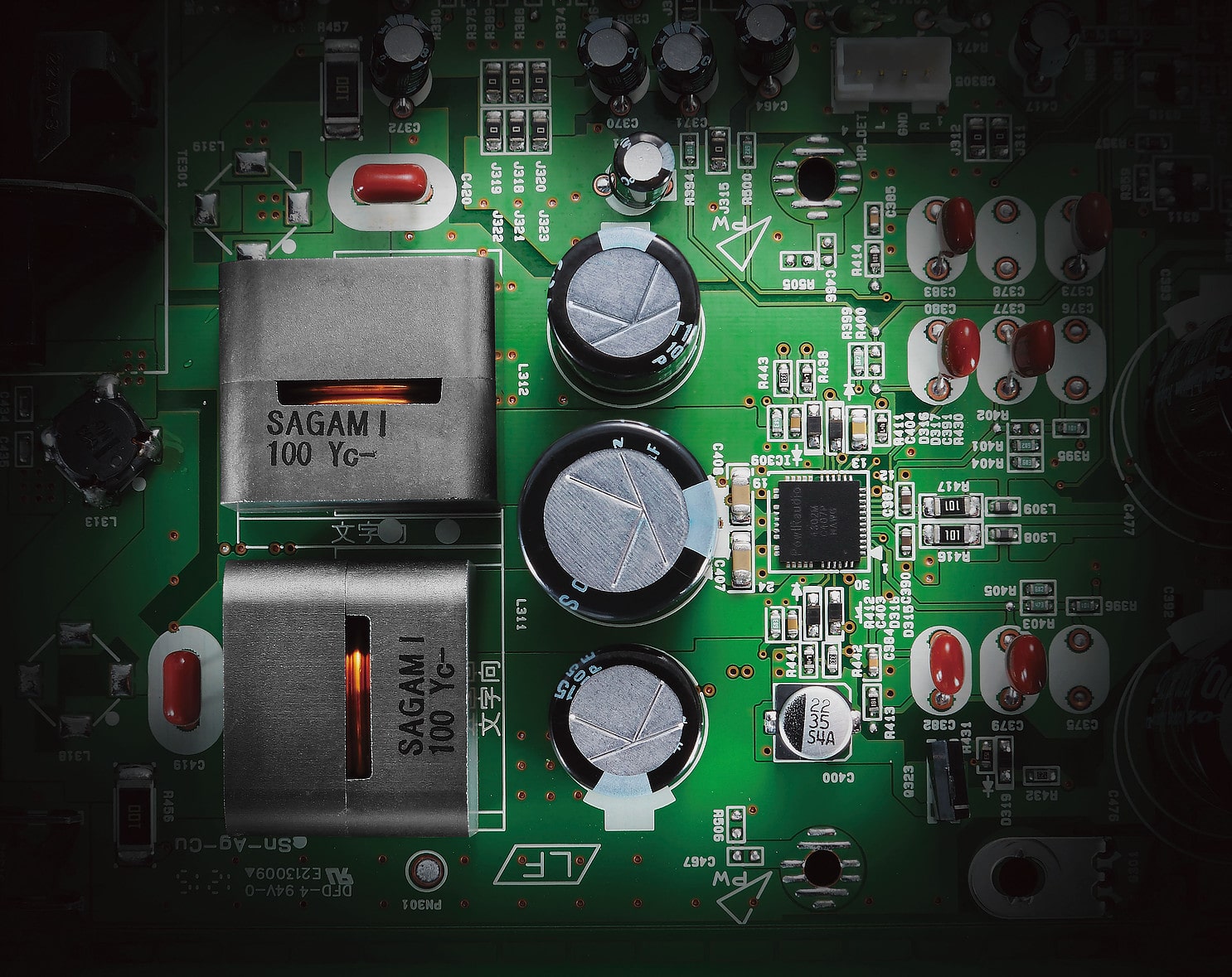
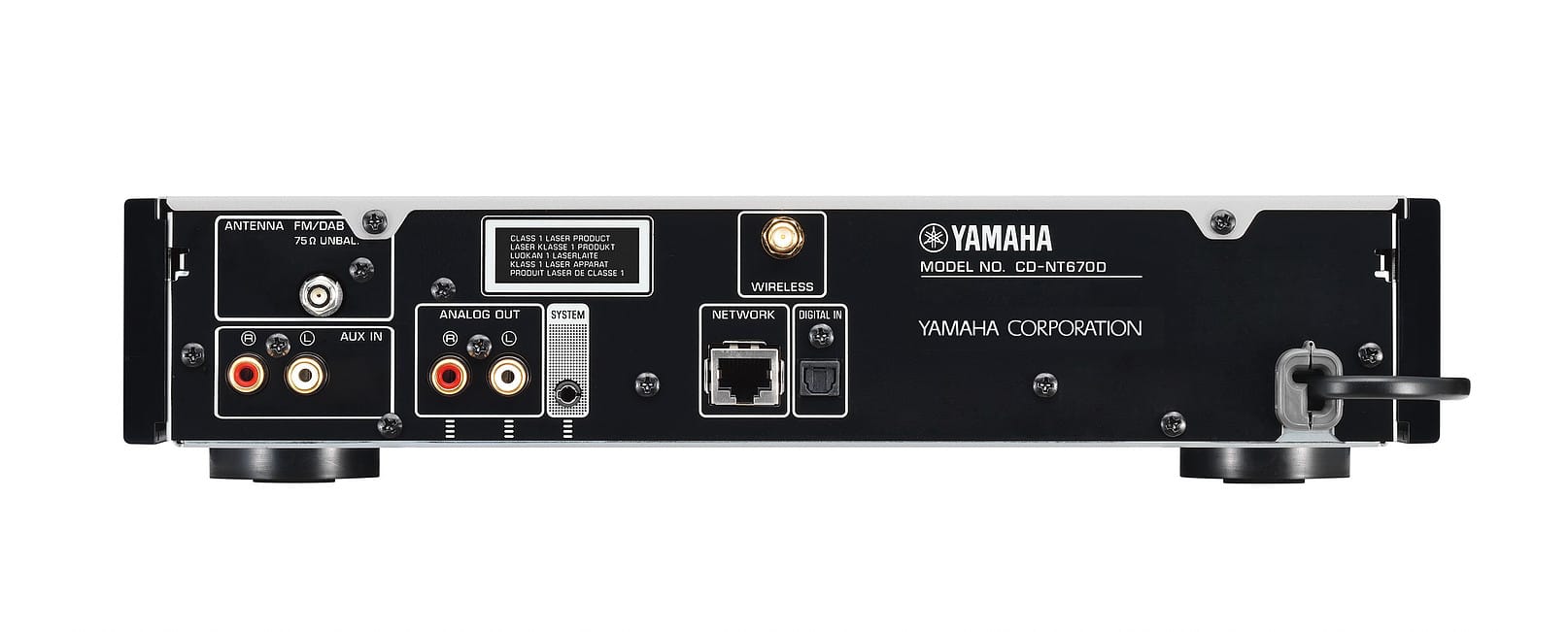
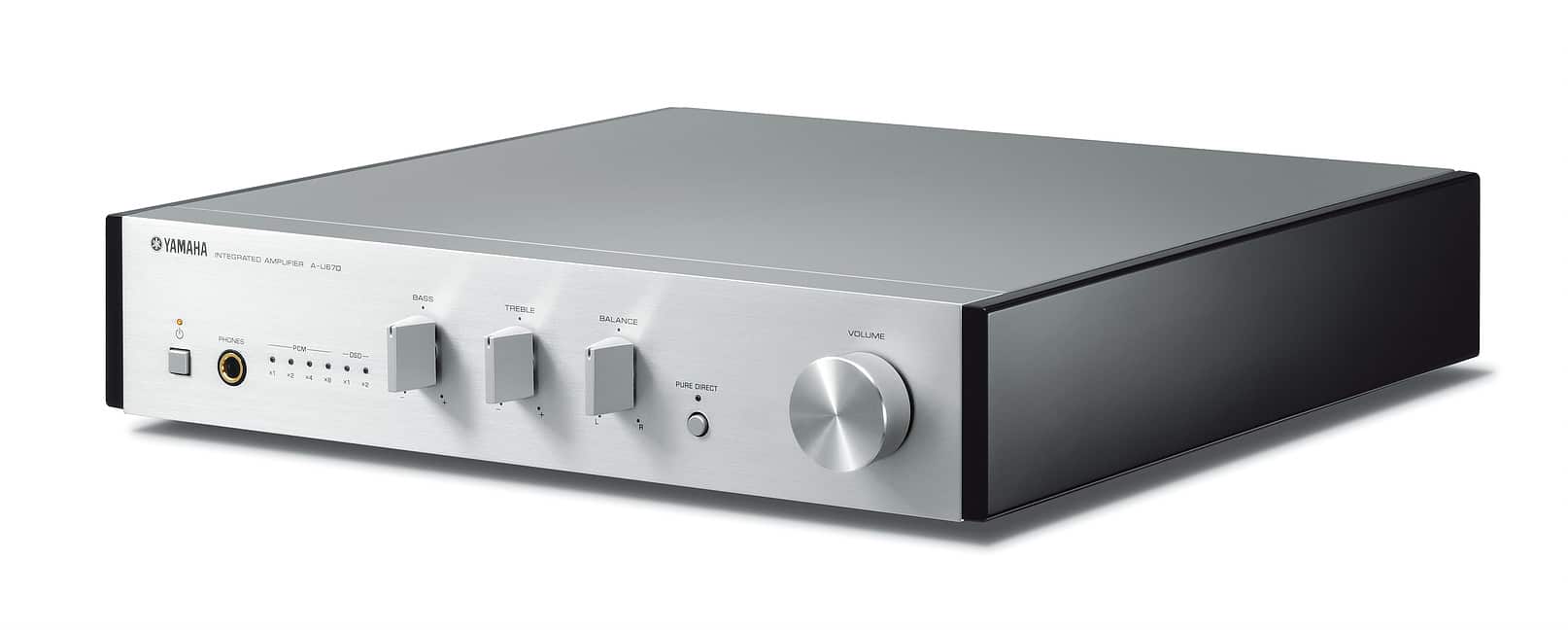
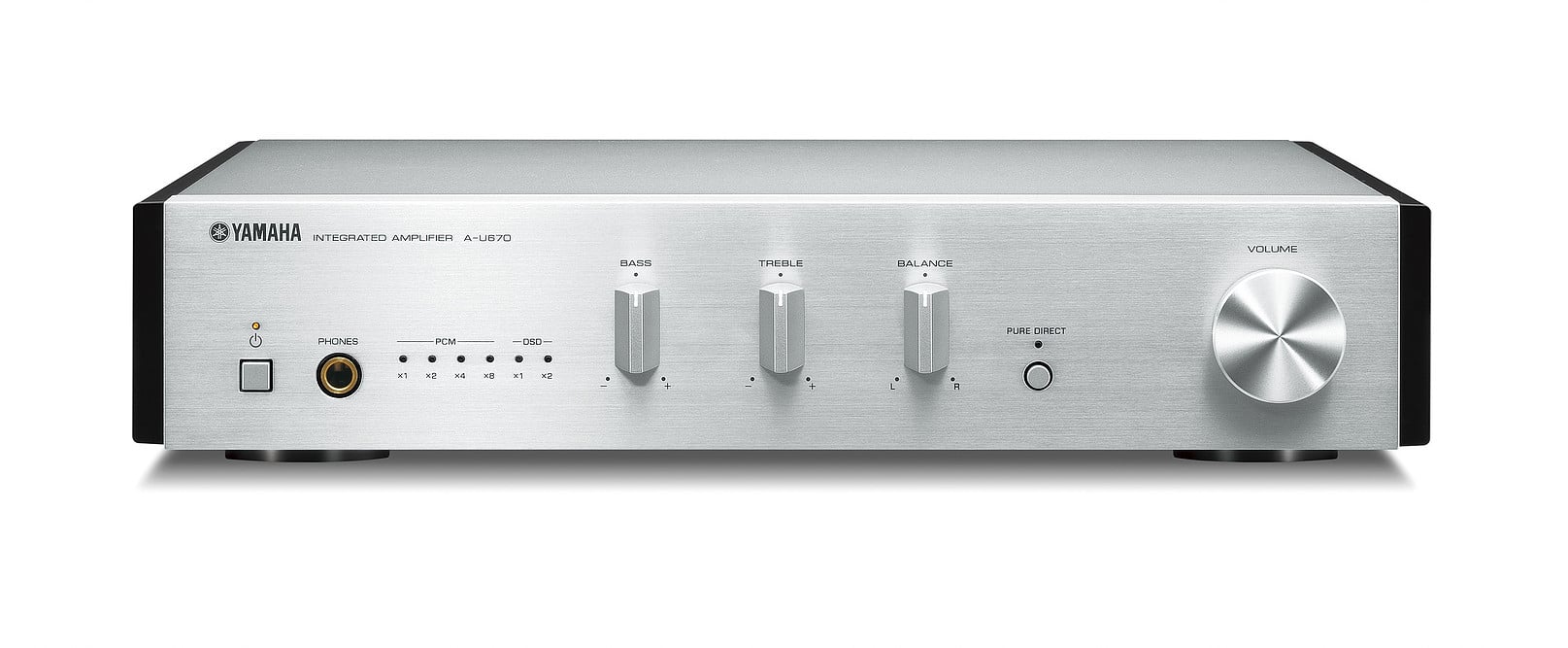
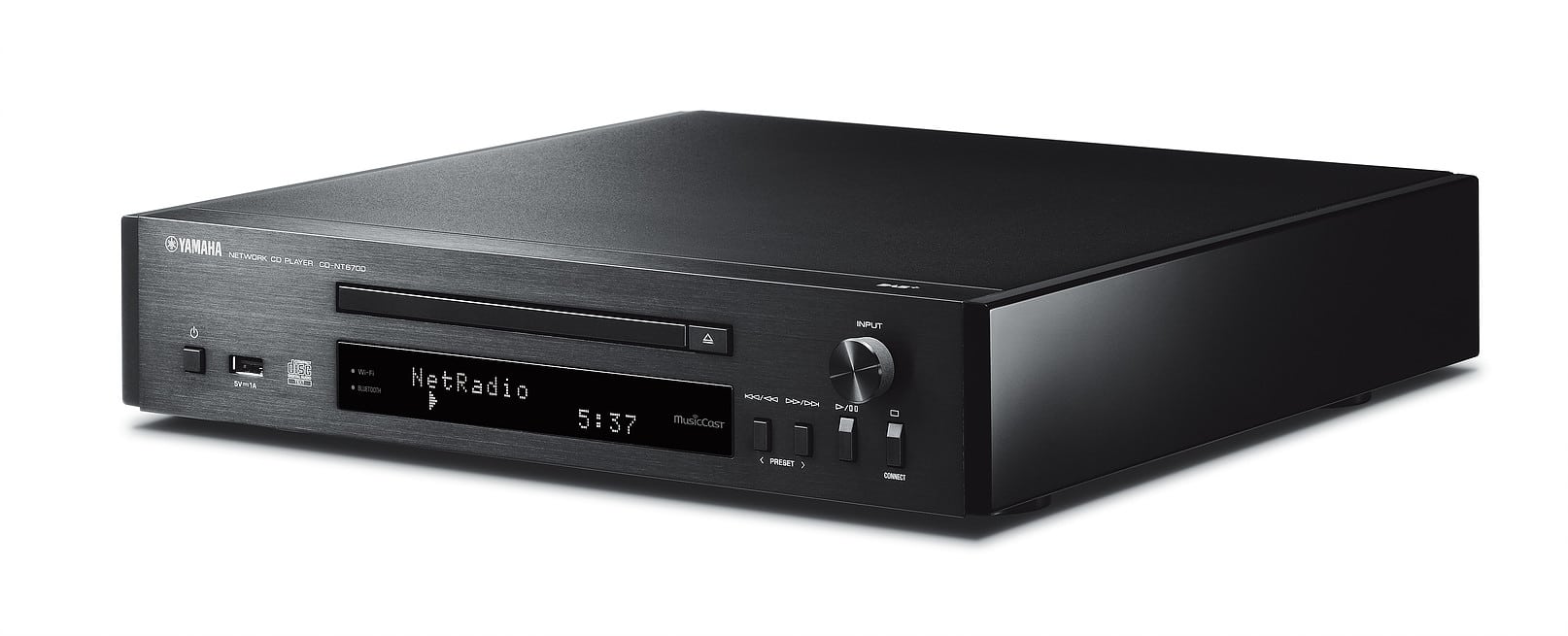
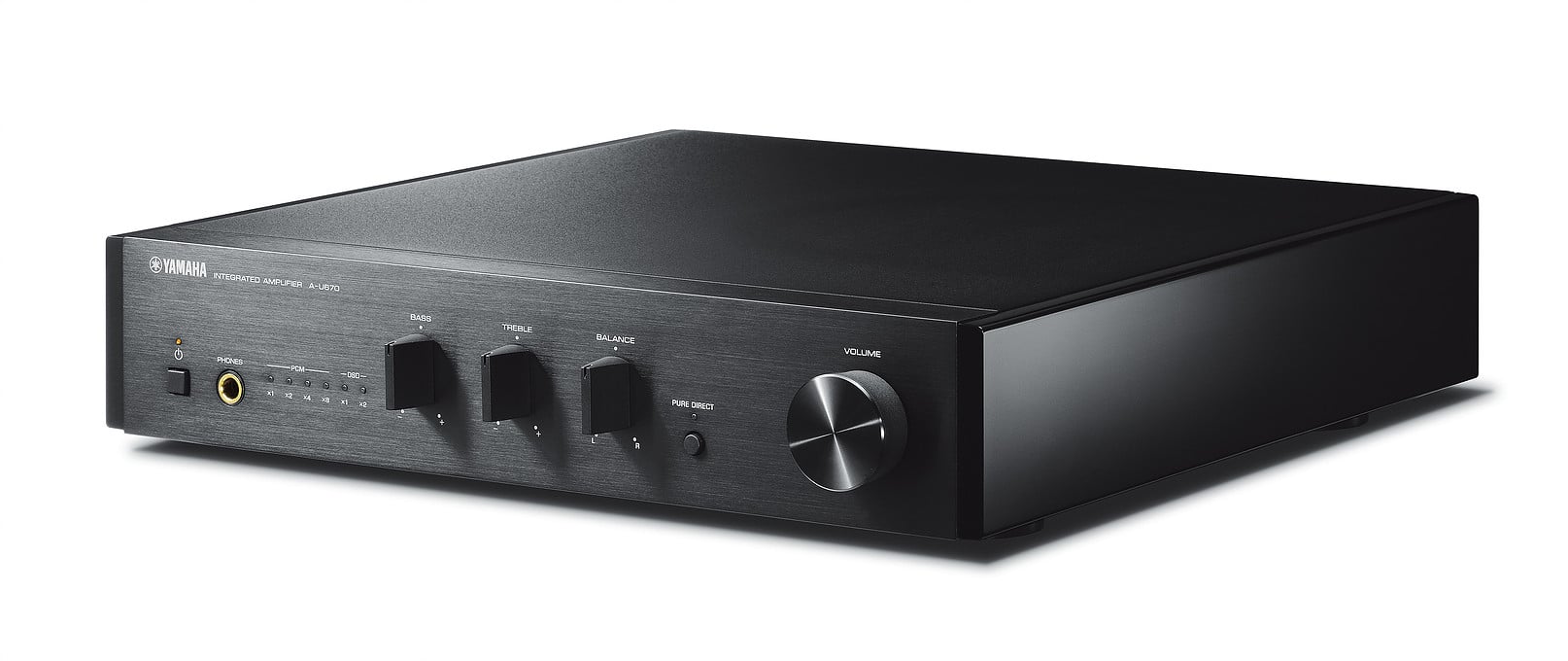
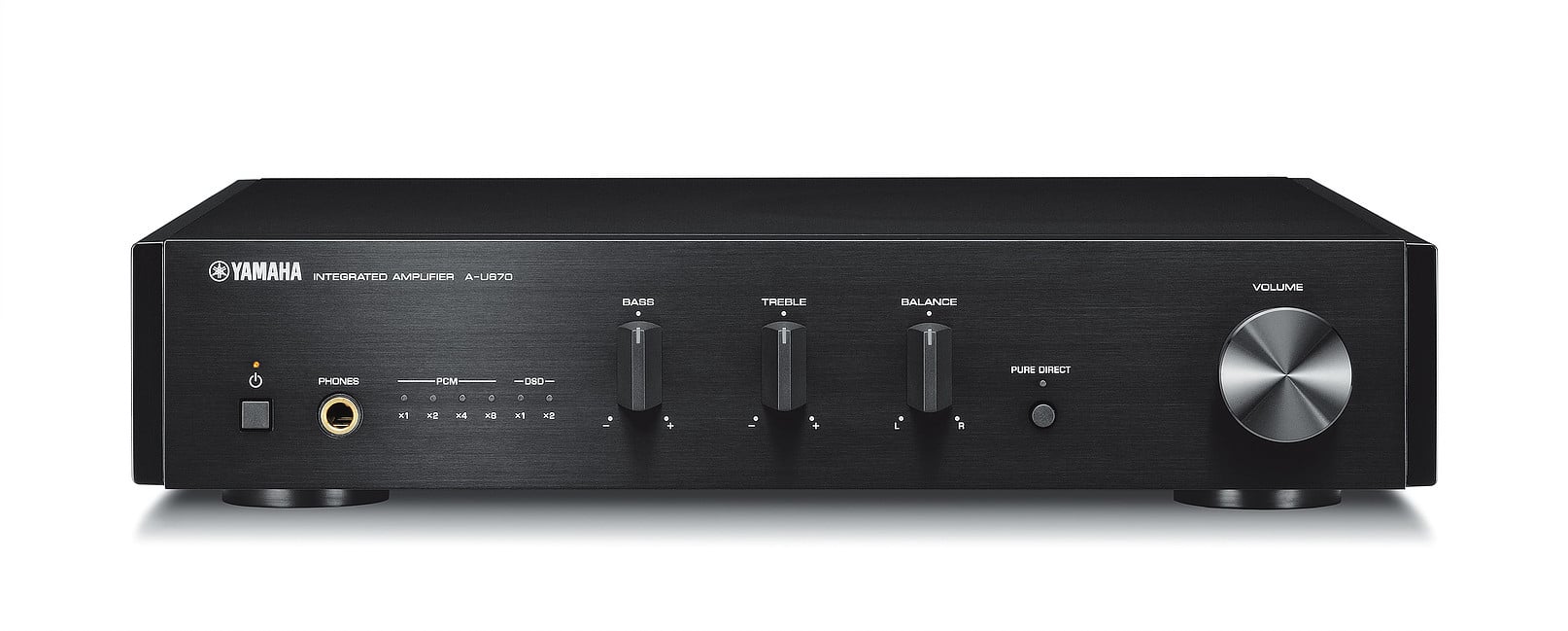
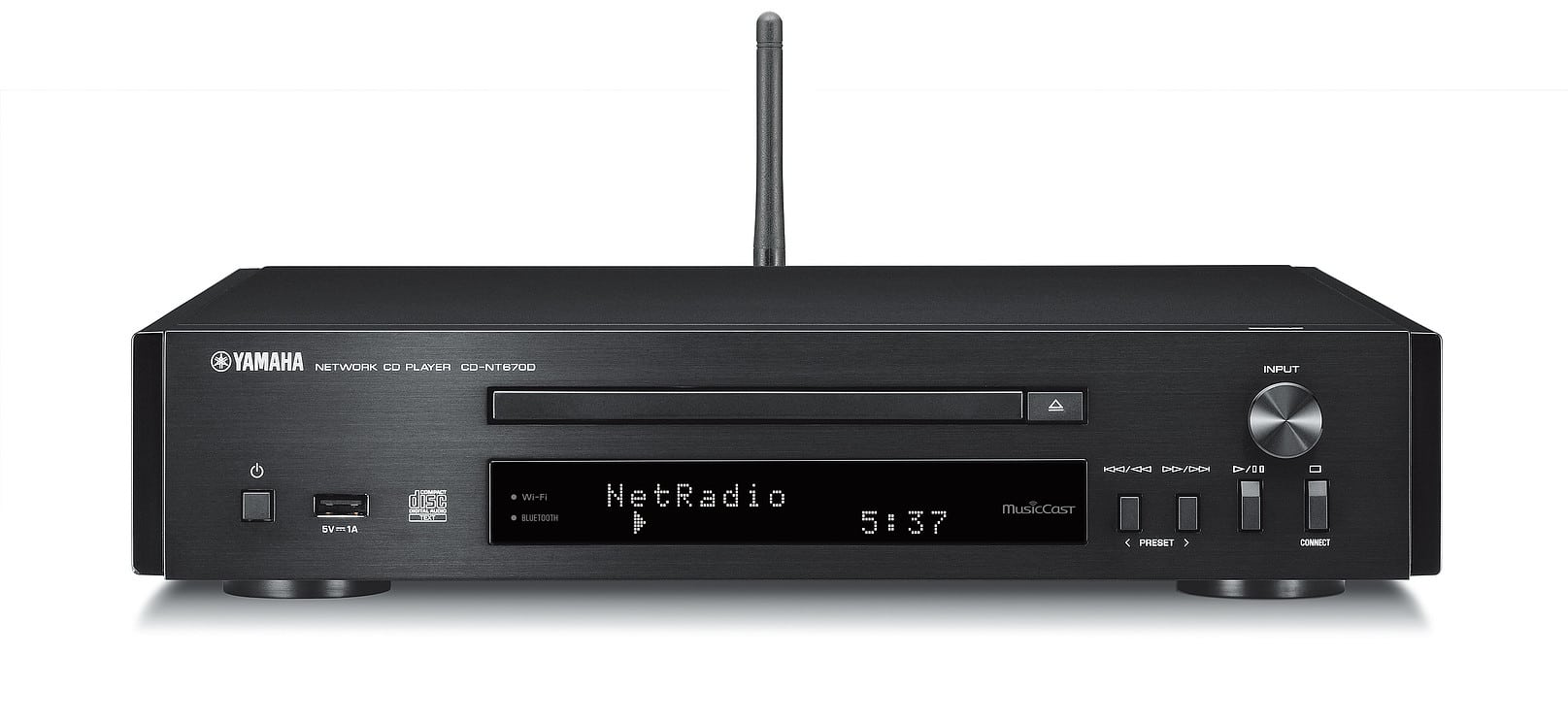
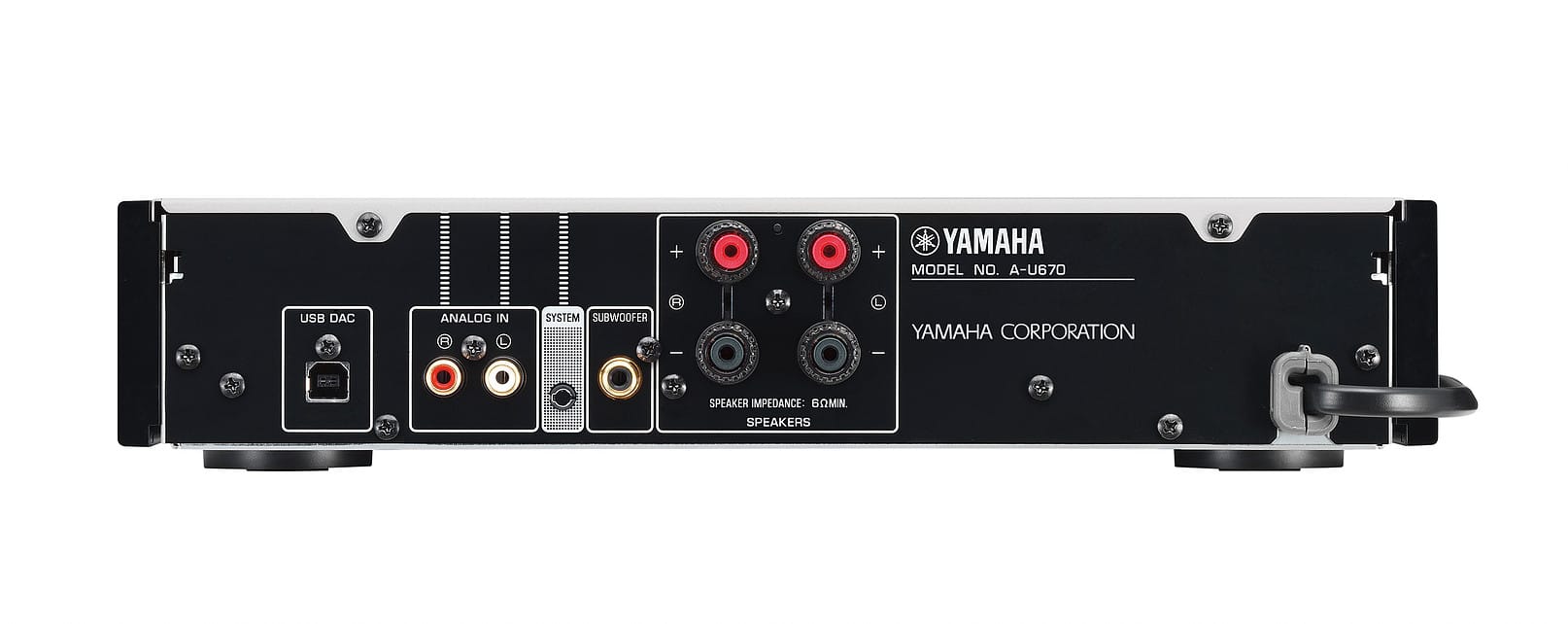



Just read article, and was wondering if the A-U670 would be a good starting amp for my Q acoustics 3010s… I am very new to the whole Audiophile scene, and have done a lot of research into amps, with the option to expand set up.
Any info or help in making my decision would greatly appreciated.
Kindest regards
The Yamaha is a capable amplifier and, yes, can be recommended but what is your budget, what do you want to use it for and what are the other components in your system?
Thank you Paul for a great review. I am now more or less convinced to buy this system. My primary use would be vinyl, secondary would be streaming (Spotify) and lastly CD and/or radio.
Therefore I am thinking of adding a Rega Planar 1 to this system. Do you think the amp is good enough to handle that, i.e not suppressing the fine dynamics that the Rega has?
Best regards
Great question Jan. I would say this: if you’re going to utilise all of the features available on the Yamaha (and there’s a fair few) then go for the Yamaha. If you’re looking at nothing else but a straight analogue chain then look at the Rega Brio, Heed Elixir or Cyrus ONE.
Thank you Paul for your quick response and a very valid point. SInce my main priority would be vinyl, maybe it is better look for a system that really can utilize the listening experience fully. The Rega Planar, Rega Brio (maybe with a bluetooth DAC for streaming services) and a pair of Monitor Bronze 2 might be awesome for a newbie audiophile like me.
Sounds good to me Jan 🙂
Hi Paul
Just bought and setup my N870. I plan to use it mostly for Deezer, CD’s and Radio (incl internet radio). My question is if it is worthwhile to upgrade any of the cables that come in the box.
Thanks.
Paulo
Hi Paulo – yes, QED provide some nice value for money cables which should serve you well. Amazon sell many of them. Grab the best you can afford.
Thank you for the reply. I suppose you are referring to the speaker cables, right ? Woud you like to suggest a specifc model in QED range ?
The system and RCA cables connecting both units are do not need to be upgraded, or do you see otherwise ?
Taking the opportunity here, while using the system for a few hours I notice that the sound coming from one of the speakers is not exactly at the same level as the other. Can not yet be precise in what I mean with this statement, but somehow they do not seem to be producing the same. Do you “guess” it is just a question of letting them burn in or could one of them actually have a problem (or maybe is it due to be cables) ?
Hi Paulo – remind me please, what interconnects you’re using? These are nice: https://www.amazon.co.uk/QED-Performance-Graphite-Stereo-Interconnect/dp/B007RE2WAS/ref=sr_1_1?ie=UTF8&qid=1526373466&sr=8-1&keywords=qed interconnect
And these speaker cables offer good value: https://theaudiophileman.com/xt25/
Re the speaker issue – try swopping the speakers to see if the issue still emerges from the same channel – if so, then the speaker is ok. If the issue follows the speaker then the speaker is at fault. I forget – is the a balance knob in the controls somewhere? Check to see that it away from the central position.
Hi Paul, am just reading this thread with interest – we already have the little brother of in this line up and my handed down but loved B&O Beomaster 7000 is reaching its last legs I have thought of this an an option . However , while the Beogram 7000 has a phono amp built in , if I was to go for the Yamaha and a new turntable could I ask for a recommendation of phono amp. I couldn’t see in the review any mention of which phono stage you used.
Best Will
Thanks for your question, William – what’s your budget for the phono amp?
Hi Paul, I am allowing £300 to £500 or alternatively just get the new Rega Plus with built in phono stage
Best
Will
Hi Will – I would advise against a Plus. I’ll be publishing a review of the turntable soon and so you’ll know why 🙂 If you can push towards ¬£500 then a Trichord Dino is highly recommended and comes with a structured upgrade path if you so wish, for later on: https://theaudiophileman.com/trichord-researchdino-mk-3-phono-stage-upgrades-stay-path/
Hi Paul, that’s great . I read the review and it does appeal. Best Will
Thanks for your comments Will
Paul,
I just bought the CD-NT670D (very similar to the 870). You seem to hint at using them as individual components, and that was also my goal: connect it to my amp, and I’ve basically all I need… Except that Yamaha apparently made the very stupid (or bad-commercial?) decision to not have any way to adjust the volume in the CD player (as opposed to their other Musiccast components).
This would mean that I’d have to connect the output of the NCP’s preamp to (yet another) preamp for the sole purpose of adjusting the volume, and connect that preamp to my amp. I think I’ll have no other option than to return the unit to my vendor here, because it’s basically unusable. As I see it, the remote *of the NCP* does have volume knobs, but they only work if another Yamaha preamp is connected to it ! More weird is that there seems to be no remote for the preamp itself… meaning there’s no way to remotely adjust the volume with one single component.
Serious disappointment that leaves me with no practical solution. I just wanted your readers to be aware of this.
Thanks for the info Francois.
Quick question: How does it’s little brother, the mcrn670 (with the A-670 amp), hold up against the 870?
Only difference seems 5w more output, pure direct button and usb DAC on the back.
Do these 3 really justify the price difference?
For me personally, I won’t be using DAC, 65W seems more than enough,
and isn’t pure direct achieved by merely keeping bass and treble at 0?
Only you can decide on that justification, Dieter. The Pure Direct should bypass the tone control entirely, thus removing an element of noise from the sound and improving quality.
Hello Paul!
Thank you very much for your reviews! I’ve just got a Yamaha MCR N870, and I’m very glad I did. I wanted to ask for your advice though. I quite agree that the “pure direct” sound is cleaner and more satisfying. I would like to have more bass though. So, I was thinking about getting a subwoofer. But this is my first hi-fi system, and I know almost nothing about subwoofers (yet). Could you please advise me on picking a subwoofer that fits well with this model? What type / power / other characteristics should I be looking for?
Could you tell anything about YAMAHA YST-SW215?
Appreciate your work! Thanks again,
Dennis
Glad I could be of help Dennis 🙂 Subwoofers…hmmm. Make sure you really want a sub and not different speakers. The reason I say this is because I find that most subs don’t time so well with their attendant speakers. There’s a sonic detachment to them and they sound stuck on, if you see what I mean. Lots of people love them, though so I would encourage you to demo a pair, any pair attached to any system, just to get a feel of them. Otherwise, you might want to consider a pair of floor standing speakers which will, at least, provide an integrated sound for you. Have your demo, have a think and then get back to me.
Hi Paul,
I have the Yamaha CRX-N470D, which is a great little system, but it does lack a little punch, and can sound a wee bit thin at times. Would using the MCR-N870D with its extra power help with these issues, whilst not loosing anything else?
Regards
Thanks for the question, Anthony. What do you use the Yamaha for, primarily? Do you use all of the features or just the amplifier bit or something else?
Hi Paul,
I use DAB, CD, Bluetooth, then internet radio in that order of importance.
Regards
Thanks for that – what’s your budget, Anthony?